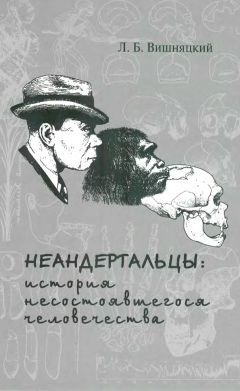Sorensen M. VLeonard W. R. Neandertal energetics and foraging efficiency// JHE. 2001. N 40. P. 483-495.
Sorensen B. n. d. Demography and the extinction of the European Neanderthals // http://energy. rue. dk/Neanderthal%20Demography. pdf
Soressi M, D Errico F. Pigments, gravures, parures: Les conportements symboliques controverses des Neandertaliens // B. Vandermeersch, B. Maureille (dir). Les Neandertaliens. Biologie et cultures. Paris: Editions du CTHS, 2007. P. 297-309.
Soressi M, Jones H. L.,Rink W. У, Maureille В., TillierA.-M. The Pech-de-l'Aze' I Neandertal child: ESR, uranium-series, and AMS 14C dating of its MTA type В context // JHE. 2007. N 52. P. 455-466.
Spencer F. The Neandertals and their evolutionary significance: A brief historical survey // F. H. Smith, F. Spencer, (eds). The Origins of Modern Humans. A World Survey of the Fossil Evidence. New York: Alan R. Liss, Inc., 1984. P. 1-49.
Spencer F., Smith F. H. The significance of Ales Hrdlicka's "Neandertal phase of man": a historical and current assessment // AJPA. 1981. N 56. P. 435-59.
Speth J. D., Tchernov E. Neandertal hunting and meat-processing in the Near East: evidence from Kebara Cave (Israel) // С. B. Stanford, H. T. Bunn (eds). Meat-Eating and Human Evolution. Oxford: Oxford University Press, 2001. P. 52-72.
Spoor F., Hublin J.-J., Braun M, Zonneveld F. The bony labyrinth of Neanderthals // JHE. 2003. N 44. P. 141-165.
Steegmann А. Т., Cerny F. J., Holliday T. W. Neandertal cold adaptation: physiological and energetic factors // AJHB. 2002. N 14. P. 566-583.
Stefan V. H., Trinkaus E. Discrete trait and dental morphometric affinities of the Tabun 2 mandible // JHE. 1998a. N 34. P. 443-468.
Stefan V. HTrinkaus E. La Quina 9 and Neandertal mandibular variability// BMSAP. 1998b. N 10. P. 293-324.
Steudel-Numbers R. L., Tilkens M. J. The effect of lower limb length on the energetic cost of locomotion: implications for fossil hominins // JHE 47. 2004. P. 95-109.
Stewart J. R. The ecology and adaptation of Neanderthals during the non-analogue environment of Oxygen Isotope Stage 3 // QI. 2005. N 137. P. 35-46.
Stiner M. C. The faunal remains from Grotta Guattari: A taphonomic perspective // CAn. 1991. N32. P. 103-117.
Stiner M. C. Small animal exploitation and its relation to hunting, scavenging, and gathering in the Italian Mousterian // G. L. Peterkin, H. Bricker, P. Mellars (eds). Hunting and Animal Exploitation in the Later Palaeolithic and Mesolithic of Eurasia. Washington DC: American Anthropological Association, 1993. P. 107-125.
Stiner M. C. Honor Among Thieves: A Zooarchaeological Study of Neandertal Ecology. Princeton: Princeton University Press, 1994.
Stolyhwo K. Homo primigenius appartient-il a une espece distincte de Homo sapiens? // L'Anthropologic. 1908a. N 19. P. 191-216.
Stolyhwo К. Le crane de Nowosiolka considere com preuve de Г existence a l'epoque historique de formes apparentees a H. primigenius II Bulletin International de l'Academie des Sciences de Cracovie. 1908b. P. 103-26.
Stoner B. P., Trinkaus E. Getting a grip on the Neandertals: Were they all thumbs? // AJPA. 1981. N54. P. 281-82.
Stermer F. C., Mysterud I. Cave smoke: air pollution poisoning involved in Neanderthal extinction? // MH. 2006. N 66. P. 723-724.
Straus W. L., Cave A. J. E. Pathology and posture of Neanderthal Man // QRB. 1957. N32. P. 348-63.
Stringer C. Modern human origins: progress and prospects // PTRSL (B). 2002. N 357. P. 563-579.
Stringer C. The Neanderthal — H. sapiens interface in Eurasia // K. Harvati, T. Harrison (eds). Neanderthals Revisited: New Approaches and Perspectives. Dordrecht: Springer, 2006. P. 315-323.
Stringer С., Gamble С. In Search of the Neanderthals. New York: Thames and Hudson, 1993.
Stringer С. В., Hublin J.-J. New age estimates for the Swanscombe hominid, and their significance for human evolution // JHE. 1999. N 37. P. 873-877.
Stringer С. В., Finlayson J. C., Barton R. N. E., Fernandez-Jalvo 7., Caceres /., Sabin R. С., Rhodes E. J., Currant A. PRodriguez-Vidal F., Giles-Pacheco F'., Riquelme-Cantal J. A. Neanderthal exploitation of marine mammals in Gibraltar // PNAS. 2008. N 105. P. 14319-14324.
Swisher С. С. Ill et al. Latest Homo erectus of Java: Potential contemporaneity with Homo sapiens in South-east Asia // Science. 1996. N 274. P. 1870-1874.
Tattersall I. The Last Neanderthal. The Rise, Success, and Mysterious Extinction of Our Closest Relatives. New York: Macmillan, 1995.
Tattersall I. What happened in the origins of human consciousness // AR. 2004. N276B.P. 19-26.
Tattersall I. Neanderthal skeletal structure and the place of Homo neanderthalensis in European hominid phylogeny // HE. 2006. N 21. P. 269-274.
Tattersall I. Neanderthals, Homo sapiens, and the question of species in paleoanthropology // JAnS. 2007. N 85. P. 139-146.
Tattersall L Human origins: Out of Africa// PNAS. 2009. N 106. P. 16018- 16021.
Tattersall /., Schwartz J. H. Hominids and hybrids: The place of Neanderthals in human evolution//PNAS. 1999. N 96. P. 7117-7119.
Tattersall /., Schwartz J. H. Extinct Humans. Boulder, CO: A Peter N. Nevraumont Book/Westview Press, 2000.
Tattersall /., Schwartz J. H. The distinctiveness and systematic context of Homo neanderthalensis II K. Harvati, T. Harrison (eds). Neanderthals Revisited: New Approaches and Perspectives. Dordrecht: Springer, 2006. P. 9-22.
Tattersall /., Schwartz J. H. The Morphological distinctiveness of Homo sapiens and its recognition in the fossil record: Clarifying the problem// EA. 2008. N 17. P. 49-54.
Thieme H. Lower Palaeolithic hunting spears from Germany// Nature. 1997. N 385. P. 807-810.
Thieme H. Lower Palaeolithic throwing spears and other wooden implements from Schoningen, Germany // H. Ullrich (ed). Hominid Evolution: Lifestyles and Strategies. Gelsenkirchen; Schwelm: Edition Archaea, 1999. P. 383-395.
Thieme H. The Lower Palaeolithic art of hunting. The case of Schoningen 13 II-4, Lower Saxony, Germany // C. Gamble, M. Porr (eds). The Hominid Individual in Context. Archaeological investigations of Lower and Middle Palaeolithic Landscapes, Locales and Artifacts. New York: Routledge, 2005. P. 115-132.
Tillet T. Les grottes a ours et occupations Neandertaliennes dans les Alps // L'ours et L'homme. Liege: ERAUL, 2002. P. 167-84.
Trinkaus E. Hard times among the Neanderthals // NHR. 1978. P. 58-63
Trinkaus E. Sexual differences in Neanderthal limb bones // JHE. 1980. N 9. P. 377-397.
Trinkaus Е. Neanderthal limb proportions and cold adaptation // С. B. Stringer (ed). Aspects of Human Evolution. London: Taylor and Francis, 1981. P. 187- 124.
Trinkaus E. Artificial cranial deformation in the Shanidar 1 and 5 Neandertals // CAn. 1982. N23. P. 198-199.
Trinkaus E. The Neandertal face: Evolutionary and functional perspectives on a recent hominid face // JHE. 1987. N 16. P. 429-443.
Trinkaus E. The evolutionary origins of the Neandertals or, why were there Neandertals // E. Trinkaus (ed). L'Homme de Neandertal. Vol. 3. L'Anatomie. Liege: ERAUL, 1988. P. 11-29.
Trinkaus E. Neanderthal mortality patterns // JAS. 1995. N 22. P. 121-142.
Trinkaus E. Appendicular robusticity and the paleobiology of modern human emergence // PNAS. 1997. N 94. P. 13367-13373.
Trinkaus E. Neandertal faces were not long; modern human faces are short // PNAS. 2003. N 100. P. 8142-8145.
Trinkaus E. Early modern humans // ARA. 2005. N 34. P. 207-230.
Trinkaus E., Shipman P. The Neandertals. Of Skeletons, Scientists, and Scandal. New York: Vintage Books, 1994.
Trinkaus E., Zilhao J. Phylogenetic implications // J. Zilhao and E. Trinkaus (eds). Portrait of the Artist as a Child. The Gravettian Human Skeleton From the Abrigo do Lagar Velho and Its Archeological Context. (Trabalhos de Arqueologia 22). Lisboa: Instituto Portugues de Arqueologia, 2002. P. 497-518.
Tzedakis P. C., Hughen K. A., Cacho /., Harvati K. Placing late Neanderthals in a climatic context // Nature. 2007. N 449. P. 206-208.
Ullrich H. Manipulations on human corpses, mortuary practice and burial rites in Palaeolithic times // V. Novotny, Mizerova (eds). Fossil Man. New Facts, New Ideas. Brno: Anthropos Institute, 1986. P. 227-236.
Underdown S. A potential role for transmissible spongiform encephalopathies in Neanderthal extinction // MH. 2008. N 71. P. 4-7.
Urbanowski M, Socha P., Dqbrowski P., Nowaczewska W., Sadakierska-Chudy A., Dobosz T., Stefaniak K., Nadachowski A. The first Neanderthal tooth found North of the Carpathian Mountains //Naturwissenschaften. 2010. N 97. P. 411-415.
Vacca E., Pesce Delfino V. Three-Dimensional topographic survey of the human remains in Lamalunga Cave (Altamura, Bari, Southern Italy) // Collegium Anthropologicum. 2004. N 28. P. 113-119.
Vallois H. VVital statistics in prehistoric populations as determined from archaeological data // R. Heizer and S. F. Cook (eds). The Application of Quantitative Methods in Archaeology. Chicago: Quadrangle, 1960. P. 186-222.
Valoch K. Beitrag zur Kenntnis des Pavlovien // Archeologicke rozhledy. 1981. N 33. P. 279-298.
Van,el Т. H., Tzedakis P. C. Palaeolithic landscapes of Europe and environs, 150,000-25,000 years ago: An overview // QSR. 1996. N 15. P. 481-500.
Vandermeersch B. L'Extinction des Neandertaliens // L'Homme de Neandertal. Vol. 7. L'Extinction. Liege: ERAUL, 1989. P. 11-21.
Vandermeersch В. Се que nous apprennent les premieres sepultures // CRP. 2006. N5. P. 161-167.
Vandermeersch В., Trinkaus E. The postcranial remains of the Regourdou 1 Neandertal: the shoulder and arm remains // JHE. 1995. N 28. P. 439-476.
Verna C., Grimes V., Toussaint M, Hublin J.-J., Richards M. Tracing Neandertal movement and mobility using strontium isotope analysis: case studies from Belgium // PA. 2010. A35.
Verneau R. La race de Neanderthal et la race de Grimaldi; leur role dans l'humanite // JRAI. 1924. N 54. P. 211-230
Villa P., Lenoir M. Hunting and hunting weapons of the Lower and Middle Paleolithic of Europe // J.-J. Hublin, M. P. Richards (eds). The Evolution of Hominin Diets: Integrating Approaches to the Study of Palaeolithic Subsistence. Springer, 2009. P. 59-85.
Voisin J.-L. Krapina and other Neanderthal clavicles: A peculiar morphology? // PB. 2006a. N 108. P. 331-339.
Voisin J.-L. Speciation by distance and temporal overlap: a new approach to understanding Neanderthal evolution// R. Harvati, T. Harrison (eds). Neanderthals Revisited: New Approaches and Perspectives. Dordrecht: Springer, 2006b. P. 299-314.
Wainer К., Genty D., Blamart D., Hoffmann D., Couchoud L A new stage 3 millennial climatic variability record from a SW France speleothem // PPP. 2009. N 271. P. 130-139.
Walker M. J.,Lombardi A. VZapata J., Trinkaus E. Neandertal mandibles from the Sima de las Palomas del Cabezo Gordo, Murcia, Southeastern Spain // AJPA. 2010. N 142. P. 261-272.
Weaver T. D. The shape of the Neandertal femur is primarily the consequence of a hyperpolar body form // PNAS. 2003. N 100. P. 6926-6929.
Weaver T. D. The meaning of Neandertal skeletal morphology // PNAS. 2009. N 106. P.16026-16033.
Weaver T. D., Hublin J.-J. Neandertal birth canal shape and the evolution of human childbirth //PNAS. 2009. N 106. P. 8151-8156.
Weaver T. DRoseman С. C. New developments in the genetic evidence for modern human origins // EA. 2008. N 17. P. 69-80.
Weaver T. D., Steudel-Numbers K. Does climate or mobility explain the differences in body proportions between Neandertals and their Upper Paleolithic successors? // EA. 2005. N 14. P. 218-223.
Weaver T. D., Roseman С. C., Stringer С. B. Were neandertal and modern human cranial differences produced by natural selection or genetic drift? // JHE. 2007. N 53. P.135-145.
Weidenreich F. The «Neanderthal Man» and the ancestors of «Homo sapiens» II AA. 1943. N45. P. 39-48.





